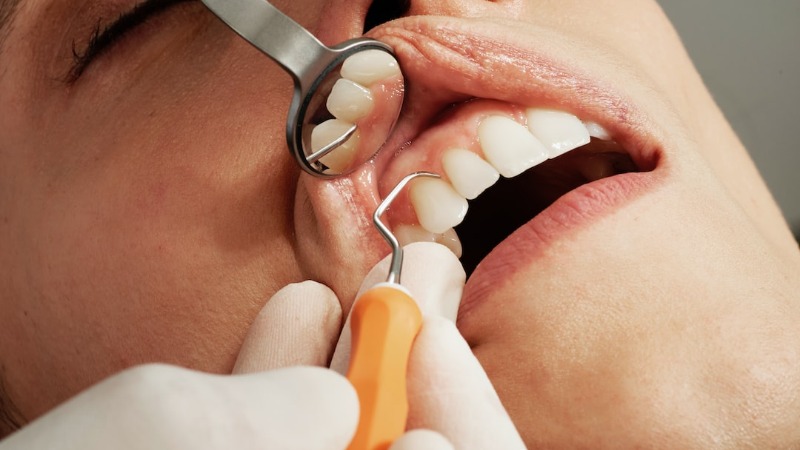
Periodontal Disease (Gum Disease) – Symptoms And Treatment
What Is Periodontal Disease?
Contents
Periodontal disease, or periodontitis, is a severe form of gum disease. Gum disease starts as gingivitis, which is inflammation of the gums. If left untreated, gingivitis can then progress to periodontal disease, inflammation of the gums, and bone supporting the teeth. This bone loss can eventually lead to tooth loss in severe periodontal disease cases.
Periodontal Disease Symptoms
Some symptoms of periodontal disease include:
- Purple or red swollen gums
- Gums that are painful or tender
- Bleeding gums when brushing or flossing teeth
- Teeth that have shifted or are loose
- Persistent bad breath
- Receding gums
- Periodontal pockets are the gaps between the teeth and the gums, and this area collects plaque and can cause the gums to become inflamed and infected. Your dentist will measure the depth of the periodontal pockets to determine the severity of your gum disease.
Causes of Periodontal Disease
Periodontal disease can lead to tooth loss and even more severe conditions, such as heart problems, when left untreated. Knowing the causes of periodontal disease is essential to take preventative measures and maintaining optimal oral health.
One of the most common causes of periodontal disease is poor oral hygiene. Not brushing or flossing regularly allows plaque and tartar to build up on teeth, leading to bacterial growth, which can cause inflammation in the gums. Additionally, smoking cigarettes or using other tobacco-based products can increase your risk of developing periodontal disease due to their effects on reducing saliva production and growing bacteria in the mouth.
How To Treat Periodontal Disease
The aim of treating periodontal disease is to :
- Help the gums reattach to the teeth
- Reduce swelling of the gums
- Reduce the depth of the periodontal pockets
- Lessen the risk of infection
- Stop the gum disease from worsening.
The way to treat gum disease is to clean away tartar from above and below the gums. This may be done by a dental hygienist or a gum specialist, called a periodontist. Any bone loss caused by gum disease cannot be reversed. However, having the appropriate treatment can stop bone loss from continuing. You may need to have your teeth cleaned more frequently than twice per year, and it may need to be done as often as every three months.
No matter how often you have your teeth professionally cleaned, you will still need to look after them at home. Diligently brushing and flossing your teeth daily will help stop periodontal disease from becoming more severe. Small brushes, such as TePe Interdental Brushes, may also be needed to clean between your teeth. A medicated mouthwash may also be recommended to you by your dental professional.
Impact on Overall Health
Periodontal disease, often called gum disease, is a severe condition that can significantly impact overall health. It occurs when the gums become infected and inflamed due to bacteria in plaque buildup, which can lead to tooth decay and even jawbone damage if left untreated. Unfortunately, this common form of gum disease affects almost half of all adults in the United States.
The effects of periodontal disease extend beyond teeth and gums; studies show that it can cause serious health problems such as stroke, heart attack, diabetes complications, and respiratory issues. For example, research has found that people with severe periodontal disease are twice as likely to have coronary artery disease than those without it. Additionally, the bacteria from periodontal disease have been linked to inflammation throughout the body, which has been shown to worsen conditions like arthritis and asthma.
Conclusion: Managing Periodontal Disease
Periodontal disease, also known as gum disease, is a severe oral health condition that can cause tooth loss and other systemic health issues. Proper diagnosis, treatment, and management of the disease make it possible to keep your teeth and gums healthy.
The best way to manage the periodontal disease is through regular dental visits for checkups and cleanings. Dentists will examine your mouth for signs of periodontal disease during these appointments and suggest treatments accordingly. Additionally, brushing twice daily with a soft toothbrush and flossing daily are essential for keeping plaque levels low.
It’s also essential to practice good oral hygiene habits, such as avoiding certain foods that may aggravate the condition or worsen existing symptoms. Eating a balanced diet rich in vitamins A & C can help maintain oral health while managing periodontal disease.

